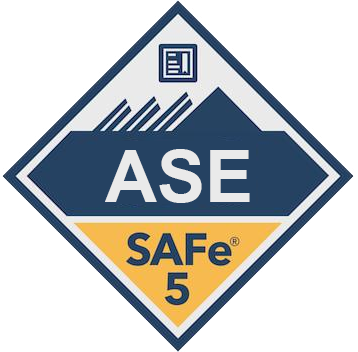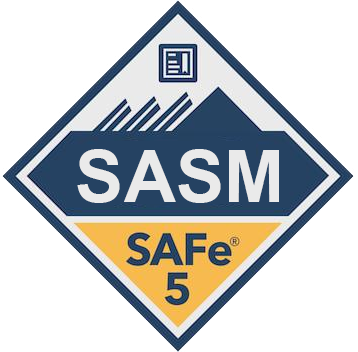Introduction: The Impact of Agile Methodologies on Product Quality and Customer Satisfaction
In today’s fast-paced business landscape, organizations strive to deliver high-quality products while ensuring customer satisfaction. Agile methodologies have emerged as a powerful approach to achieving these goals. In this article, we delve into the fundamental principles of Agile and explore how they directly influence product quality and customer happiness.
A Brief Refresher on Agile Principles
1. Iterative and Incremental Development
Agile embraces an iterative and incremental development process. Instead of attempting to build the entire product in one go, teams break down work into smaller, manageable chunks. Each iteration results in a potentially shippable increment, allowing for rapid feedback and adjustments.
2. Customer Collaboration over Contract Negotiation
Agile prioritizes collaboration with customers throughout the development cycle. Regular interactions ensure that the product aligns with customer needs and expectations. By involving stakeholders early and often, Agile teams can adapt swiftly to changing requirements.
3. Embracing Change
Agile acknowledges that change is inevitable. Rather than resisting it, Agile teams welcome change as a means to enhance the product. Frequent feedback loops allow for course corrections, ensuring that the end result meets evolving market demands.
4. Continuous Delivery
Continuous delivery is at the heart of Agile. It emphasizes delivering working software frequently—sometimes even daily. This approach reduces risk, accelerates time-to-market, and enables teams to respond promptly to emerging opportunities or challenges.
5. Self-Organizing Teams
Agile empowers self-organizing teams. These teams collaborate, make decisions collectively, and take ownership of their work. Trusting team members to solve problems fosters creativity and accountability.
Purpose of this Article
Our purpose is to explore how Agile principles directly impact both product quality and customer satisfaction. By understanding these principles, organizations can optimize their processes, enhance product outcomes, and create delighted customers.
In subsequent sections, we’ll delve deeper into specific Agile practices and their effects on quality and satisfaction. So, fasten your seatbelt as we embark on this Agile journey!
Agile’s Impact on Product Quality
In the dynamic landscape of software development, Agile methodologies have revolutionized how teams approach product quality. Let’s delve into how Agile principles directly influence the quality of the end product.
Iterative Development and Quality
Agile embraces an iterative and incremental approach to development. Rather than attempting to build the entire product in one monolithic effort, Agile teams break down work into smaller, manageable chunks. Each iteration results in a potentially shippable increment, allowing for constant refinement of the product.
Key Aspects of Iterative Development:
- Feedback-Driven Refinement: Agile iterations facilitate regular feedback from stakeholders, including customers, product owners, and team members. This feedback loop enables teams to make adjustments, address issues, and enhance the product incrementally.
- Adaptability: Agile teams remain adaptable. As they receive feedback, they can swiftly incorporate changes, refine features, and improve overall quality. The iterative nature ensures that the product evolves in alignment with evolving requirements.
- Risk Mitigation: By delivering smaller increments, Agile reduces risk. If a particular feature or enhancement doesn’t meet expectations, it can be adjusted or even discarded without jeopardizing the entire project.
Benefits of Iterative Development for Quality:
- Early Detection of Defects: Frequent iterations allow for early detection of defects. Teams can identify issues, bugs, or design flaws and rectify them promptly.
- Continuous Improvement: Iterative development fosters a culture of continuous improvement. Teams learn from each iteration, apply lessons, and enhance their processes, leading to better quality outcomes.
Quality Assurance in Agile
Agile practices emphasize quality assurance throughout the development lifecycle. Let’s explore specific practices that contribute to maintaining and improving product quality:
1. Test-Driven Development (TDD):
- TDD is a practice where developers write tests before writing the actual code. These tests define the expected behavior of the code.
- Benefits:
- Ensures that code meets requirements.
- Detects regressions early.
- Encourages modular and well-structured code.
- Boosts confidence in code changes.
- Ensures that code meets requirements.
2. Pair Programming:
- In Pair Programming, two developers collaborate on the same piece of code.
- Benefits:
- Immediate feedback during development.
- Reduced chances of introducing defects.
- Shared knowledge and problem-solving.
- Improved code quality through peer review.
- Immediate feedback during development.
Real-World Examples
Let’s draw inspiration from real-world success stories:
- Spotify: Spotify’s Agile adoption led to faster releases, improved quality, and enhanced customer satisfaction. Their iterative approach allowed them to fine-tune features based on user feedback.
- Amazon: Amazon’s relentless focus on customer satisfaction aligns with Agile principles. Their iterative development and continuous delivery practices ensure that their products meet customer needs.
- Etsy: Etsy’s commitment to quality is evident in its Agile practices. They prioritize customer collaboration, iterate frequently, and maintain high-quality standards.
Agile methodologies directly impact product quality by fostering adaptability, emphasizing quality assurance practices, and enabling continuous improvement. As organizations embrace Agile, they unlock the potential for delighted customers and successful products.
Agile’s Effect on Customer Satisfaction
1. Customer Collaboration
Agile methodologies recognize that customer collaboration is not just a checkbox on a project plan; it’s a fundamental driver of success. Here’s how Agile ensures that the product evolves according to real user needs, ultimately increasing customer satisfaction:
Regular Feedback Loops:
- Agile teams engage with customers throughout the development process. Whether through demos, user testing, or direct conversations, they seek feedback.
- By involving customers early and often, Agile teams ensure that the product aligns with actual user needs. This collaborative approach leads to features that resonate with the target audience.
Adaptability to Changing Requirements:
- Agile embraces change as an opportunity. When customer requirements evolve, Agile teams pivot swiftly.
- The iterative nature of Agile allows for course corrections. If a feature isn’t meeting expectations, it can be adjusted or even discarded without disrupting the entire project.
Shared Ownership and Accountability:
- Agile promotes a sense of shared ownership. Customers are part of the team, not distant stakeholders.
- When customers collaborate directly with developers, they feel invested in the product’s success. This sense of accountability drives satisfaction.
2. Flexibility and Responsiveness
Agile’s flexibility is a superpower in today’s dynamic business environment. Here’s how it impacts customer satisfaction:
Swift Adaptation to Changing Demands:
- Customer needs shift rapidly. Agile allows businesses to adapt their products swiftly.
- Whether it’s a new market trend or a sudden requirement change, Agile teams can adjust their course without bureaucratic delays.
Reduced Time-to-Market:
- Agile’s focus on continuous delivery means that features are released incrementally. This shortens the time from idea to implementation.
- Customers get value sooner, leading to satisfaction. Waiting months for a full release is a thing of the past.
Customer-Centric Prioritization:
- Agile teams prioritize work based on customer impact. Features that directly enhance customer experience take precedence.
- This customer-centric approach ensures that the most valuable features are delivered first, delighting users.
3. Real-World Examples
Let’s explore how Agile has directly impacted customer satisfaction across various industries:
- Spotify: By collaborating closely with users, Spotify continuously refines its music streaming experience. Personalized playlists, discoverability features, and seamless navigation—all driven by Agile practices—have made millions of users loyal fans.
- Zappos: The online shoe retailer Zappos thrives on Agile principles. Their responsiveness to customer feedback, quick iterations, and commitment to quality service have elevated customer satisfaction to legendary levels.
- Salesforce: Salesforce’s cloud-based solutions are a testament to Agile’s impact. Regular updates, tailored features, and a user-friendly interface keep customers engaged and satisfied.
Measurement and Metrics in Agile: Enhancing Quality and Satisfaction
In the Agile world, measurement and metrics play a pivotal role in assessing product quality and customer satisfaction. Let’s explore how Agile frameworks incorporate these aspects:
1. Tracking Quality and Satisfaction Metrics
Key Performance Indicators (KPIs) for Quality:
- Defect Density: This metric quantifies the number of defects (bugs, issues) per unit of code. A lower defect density indicates better quality.
- Code Coverage: It measures the percentage of code covered by automated tests. Higher code coverage suggests thorough testing and better quality assurance.
- Lead Time: The time taken from a feature request to its deployment. Shorter lead times indicate efficient development processes.
- Cycle Time: The time taken to complete a single work item (e.g., user story). Shorter cycle times correlate with faster delivery and potentially higher quality.
KPIs for Customer Satisfaction:
- Net Promoter Score (NPS): A survey-based metric that gauges how likely customers are to recommend your product. High NPS indicates satisfied customers.
- Customer Satisfaction Score (CSAT): A direct survey asking customers to rate their satisfaction. Regular CSAT assessments provide insights into customer happiness.
- User Engagement Metrics: These include metrics like active users, session duration, and feature adoption. Engaged users are likely satisfied users.
2. Continuous Feedback Loops
Sprint Reviews:
- At the end of each sprint (iteration), Agile teams conduct Sprint Reviews.
- Purpose: To showcase completed work to stakeholders, including customers.
- Metrics:
- Demo Satisfaction: How satisfied stakeholders are with the demonstrated features.
- Feedback: Gathered from stakeholders during the review.
- Demo Satisfaction: How satisfied stakeholders are with the demonstrated features.
Retrospectives:
- Held after each sprint, Retrospectives focus on process improvement.
- Metrics:
- Team Happiness: Assess team morale and satisfaction.
- Action Items Completed: Measure the effectiveness of improvements identified in previous retrospectives.
- Team Happiness: Assess team morale and satisfaction.
Conclusion
Agile’s commitment to measurement, continuous feedback, and customer-centric metrics ensures that product quality and customer satisfaction remain at the forefront. By tracking the right KPIs and fostering a culture of improvement, Agile teams create products that delight users and stand the test of time.
Challenges and Considerations in Agile Methodologies
1. Balancing Speed and Quality
Agile methodologies emphasize rapid development cycles, but this speed can sometimes come at the expense of quality. Let’s delve into the challenges faced when balancing speed and quality:
Rushed Releases and Quality Trade-offs:
- Challenge: Agile teams often work under tight deadlines, pushing for frequent releases. However, rushing releases can lead to inadequate testing, overlooked defects, and compromised quality.
- Consideration: Strive for a balance. While speed is essential, ensure that quality assurance processes are not sacrificed. Implement automated testing, code reviews, and thorough validation.
Technical Debt Accumulation:
- Challenge: Agile iterations may prioritize delivering new features over addressing technical debt (e.g., code refactoring, and architectural improvements). Accumulated technical debt can hinder long-term quality.
- Consideration: Allocate time for periodic technical debt reduction. Balance feature development with necessary maintenance to prevent quality erosion.
Scope Creep and Feature Bloat:
- Challenge: Agile projects can suffer from scope creep—additional requirements added during development. Feature bloat can dilute product focus and impact quality.
- Consideration: Maintain a clear product vision. Regularly reassess features and prioritize based on customer value. Avoid unnecessary complexity.
2. Customer Involvement Challenges
Managing High Levels of Customer Involvement:
- Challenge: Agile encourages close collaboration with customers, but managing their expectations and involvement can be demanding.
- Consideration: Set clear boundaries. Involve customers strategically—seek their input without overwhelming the development process. Regular communication is key.
Balancing Customer Requests and Technical Feasibility:
- Challenge: Customers often request features that may not align with technical constraints or project goals.
- Consideration: Engage in transparent conversations. Educate customers about trade-offs. Prioritize features that align with the project’s vision and technical feasibility.
Handling Differing Customer Opinions:
- Challenge: Agile teams work with diverse stakeholders, each with unique opinions and priorities.
- Consideration: Facilitate collaborative decision-making. Use techniques like user story mapping and impact mapping to align customer perspectives.
Conclusion
Agile success lies in navigating these challenges thoughtfully. By maintaining a delicate balance between speed and quality and fostering effective customer collaboration, organizations can maximize the impact of Agile methodologies on both product quality and customer satisfaction.
Best Practices in Implementing Agile for Quality
Agile methodologies thrive on collaboration, adaptability, and continuous improvement. To ensure seamless integration of quality assurance (QA) into Agile cycles, consider the following best practices:
1. QA as a Core Team Member
- Embed QA Early: Involve QA professionals from the project’s inception. Their insights during backlog refinement and sprint planning enhance quality considerations.
- Collaborate Across Roles: QA engineers, developers, and product owners should work closely. Regular communication ensures alignment and prevents last-minute surprises.
2. Automated Testing
- Test-Driven Development (TDD): Write tests before writing code. TDD ensures that features meet requirements and prevents regressions.
- Continuous Integration (CI): Automate test execution on every code commit. CI pipelines catch issues early, maintaining code quality.
3. Quality Metrics
- Track Quality Metrics: Monitor defect density, code coverage, and lead time. Use these metrics to assess quality trends and make data-driven decisions.
- Customer-Focused Metrics: Include NPS, CSAT, and user engagement metrics. These reflect customer satisfaction and guide quality improvements.
Enhancing Customer Satisfaction through Agile
Agile isn’t just about development; it’s a mindset that can elevate customer satisfaction. Here’s how to leverage Agile effectively:
1. Customer-Centric Backlog
- User Stories with Value: Prioritize user stories based on customer impact. Deliver features that directly enhance their experience.
- Regular Feedback: Engage customers during sprint reviews. Their feedback guides iterations and ensures alignment.
2. Iterative Customer Engagement
- Frequent Demos: Showcase work-in-progress to customers. Their involvement fosters ownership and satisfaction.
- Adapt Based on Feedback: Be open to changes. Agile allows quick adjustments based on real-world insights.
3. Transparency and Communication
- Clear Roadmaps: Share product roadmaps with customers. Transparency builds trust and sets expectations.
- Honest Conversations: Discuss trade-offs openly. Explain technical constraints and involve customers in decision-making.
By implementing these practices, organizations can harness Agile’s power to enhance both product quality and customer satisfaction. Remember, Agile isn’t just a process—it’s a journey toward delighted users and successful products.
Conclusion: Unleashing Agile’s Impact on Quality and Satisfaction
In our journey through the impact of Agile methodologies, we’ve explored how this dynamic approach transforms product development and customer experiences. Let’s recap the critical ways Agile enhances both product quality and customer satisfaction:
Agile and Product Quality
- Iterative Refinement: Agile’s iterative development process allows for continuous refinement. Regular feedback loops ensure that defects are caught early, leading to higher-quality products.
- Quality Assurance Practices: Agile practices like Test-Driven Development (TDD) and Pair Programming maintain and improve quality. By embedding QA early and emphasizing automated testing, Agile teams elevate product standards.
- Real-World Success: Companies like Spotify, Amazon, and Etsy have harnessed Agile to deliver high-quality products. Their success stories demonstrate the tangible impact of Agile on quality.
Agile and Customer Satisfaction
- Customer Collaboration: Agile prioritizes customer involvement. Regular interactions ensure that the product aligns with real user needs. Delighted customers emerge from this collaborative approach.
- Flexibility and Responsiveness: Agile’s adaptability allows businesses to swiftly respond to changing customer demands. Reduced time-to-market and customer-centric prioritization lead to satisfaction.
- Real-World Inspiration: Spotify, Zappos, and Salesforce exemplify how Agile practices directly impact customer happiness. Their commitment to iterative development and customer engagement pays off.
Apply These Insights
As you consider implementing Agile in your context or industry, remember these key takeaways:
- Balance Speed and Quality: Strive for a harmonious balance. Speed without compromising quality ensures sustainable success.
- Engage Customers Strategically: Involve customers without overwhelming the process. Transparent communication builds trust.
- Measure and Adapt: Continuously track quality metrics and customer satisfaction. Adapt based on insights.
Agile isn’t a one-size-fits-all solution, but its principles can be tailored to fit your unique challenges. Whether you’re in software development, marketing, or any other field, Agile’s impact is universal. So, embrace the Agile mindset, iterate, and create products that leave a lasting impression on both users and your organization.
Remember, the Agile journey is ongoing. Keep learning, adapting, and delighting your customers—one sprint at a time!
For more posts like this follow Agile Digest social Pages or subscribe to our newsletter:
Log into Facebook to start sharing and connecting with your friends, family, and people you know.







































































